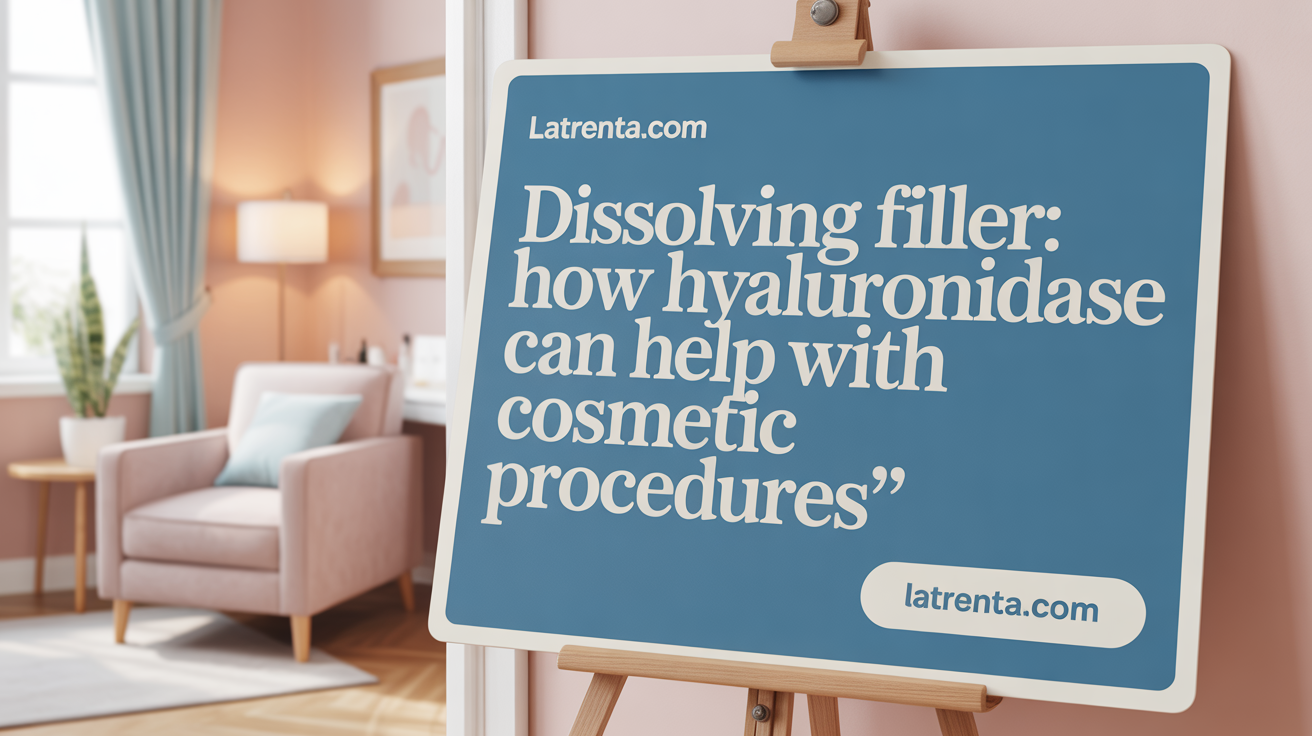Introduction to Filler Migration
Filler migration, a term that often raises concerns among those considering cosmetic enhancements, refers to the movement of dermal fillers from their original injection sites to unintended areas. Despite rumors and misconceptions, true filler migration is rare and usually a result of improper technique or care. Understanding what filler migration entails, debunking myths, and learning how to prevent and manage it is essential for anyone considering dermal fillers. This article breaks down the complexities around filler migration, highlighting key instances where it can occur and practical tips to avoid it.
Filler Migration in Cosmetic Procedures
- Filler migration refers to the unintended movement of dermal filler from its original injection site to adjacent or distant areas.
- Migration is rare, especially with skilled practitioners, due to the properties of hyaluronic acid-based products and precise injection techniques.
- Common high-mobility zones prone to perceived migration include lips, under-eye areas, cheeks, and the nose.
- Factors contributing to migration include technical errors, improper placement, excessive manipulation, and facial movements.
- Proper injection techniques—such as correct depth, angle, and volume—are essential to minimize migration risk.
- Most perceived migration issues result from swelling, tissue integration, or improper filler placement, not actual movement of the filler.
- True filler migration is uncommon due to the stability of cross-linked hyaluronic acid fillers and correct injection practices.
- Prevention strategies include expert treatment, appropriate product selection, conservative volume, and post-treatment care.
- Hyaluronic acid fillers are biodegradable, typically dissolving in 6 to 12 months, with hyaluronidase available for rapid removal.
- In cases of migration, dissolution with hyaluronidase is effective, and proper technique reduces future risk of unintended movement.
1. When Filler Moves: The Reality of Migration in High-Mobility Areas

What is filler migration and what causes it?
Filler migration refers to the unintended movement of dermal filler from its initial placement to an adjacent or even distant area. Although it is an infrequent event, migration can result in unwanted bumps, asymmetry, or puffiness, often leading patients to seek corrective treatment. This movement mainly occurs when the filler, such as hyaluronic acid-based products, shifts within facial tissues.
Migration is generally caused by technical errors during the injection process, improper placement, or excessive manipulation after treatment. For example, injecting too superficially or in the wrong tissue layer can predispose the filler to move. Overfilling the area and using inappropriate or low-viscosity filler products also elevate the risk. Additionally, post-treatment behaviors like vigorous massaging or frequent manipulation can facilitate movement.
Several factors contribute, including facial movements. Areas like the lips and under the eyes experience high mobility due to expressions and everyday activity. Natural tissue dynamics, along with individual anatomy and skin elasticity, further influence the likelihood of migration.
Common anatomical areas prone to migration
Filler migration often occurs in regions where the skin and tissues are in constant motion. High-mobility zones include:
| Area | Characteristics | Risk Factors |
|---|---|---|
| Lips | Constant movement for speaking, eating, and expressions | Over-injection, improper technique |
| Under-eye area | Delicate tissues, natural movement with facial expressions | Superficial placement, aggressive manipulation |
| Cheeks | Voluminous region with dynamic facial expressions | Excessive volume or inappropriate filler properties |
| Nose | Especially when fillers are used for augmentation or corrections | Inappropriate product choice, improper injection plane |
Causes related to facial movement and injection techniques
Facial movements, like talking, smiling, or blinking, exert pressure on the injected areas. If filler is not properly placed or if the product used is too liquid or not cohesive enough, it can gradually shift from its original target.
Injection technique plays a crucial role. Skilled practitioners use precise, deep placement, optimal product volume, and adequate viscosity to minimize risk. Over-injection or superficial injections in highly mobile areas can predispose fillers to migration.
Post-treatment care also influences outcomes. Aggressive massage, heat application, or dental procedures shortly after the injection can cause the filler to move.
Examples of migration in lips and under-eye regions
In high-mobility areas like the lips, migration may manifest as lumps, asymmetry, or unwanted fullness in adjacent regions. Excessive manipulation or deep injections can contribute to this.
For under-eye fillers, migration may cause puffiness, unevenness, or distortion of the natural tear trough. The delicate nature of this area and its constant movement make it particularly susceptible.
Recognizing the signs early—such as persistent swelling, lumps, or changes in facial symmetry—allows for prompt management. Treatments like hyaluronidase injections can dissolve certain fillers if migration is identified early.
Both lips and under-eye regions benefit from expert injection techniques, conservative filler use, and post-care instructions, which collectively help prevent migration and ensure long-lasting, natural results.
2. The Myth vs. Fact: Debunking Common Misconceptions About Filler Migration

What are common myths and facts about filler migration?
Many people believe that dermal filler migration means the filler travels extensively from its original injection site, creating asymmetry or lumps in distant areas. This is a common misconception.
In reality, true movement of the filler over long distances is quite rare, particularly when the procedure is performed by an experienced and skilled injector. Minor shifts might happen due to natural facial movements, muscle activity, or post-treatment manipulation, but the filler generally stays close to where it was initially placed.
Most perceived migration issues are not actual movement of the filler but are instead caused by other factors. For instance, swelling, natural tissue integration, or filler diffusion within a localized area can all mimic signs of migration. Additionally, improper placement or overfilling often cause uneven appearances or lumps mistaken for migration.
Why is true migration so uncommon?
True migration is rare because of the properties of commonly used fillers, especially hyaluronic acid-based products like Juvederm. These fillers are designed to stay in place once injected, thanks to their cross-linked structure.
Furthermore, using proper injection techniques, such as precise placement in the correct tissue layer and appropriate product selection, minimizes the risk.
In areas of high movement, like the lips or around the mouth, migration can be slightly more visible, but even then, serious movement over long distances remains infrequent.
How do injection technique and product choice influence migration?
The risk of migration depends heavily on the injector's skill and the properties of the chosen filler.
-
Injection Technique: Proper technique involves correct depth, angle, and amount of filler. Over-injection, incorrect placement, or using unsuitable injection methods can lead to perceived migration or lumps.
-
Product Choice: Different fillers have varying viscosities, cohesiveness, and stability. Less dense fillers are more prone to slight movement, especially if not used appropriately.
-
Post-treatment behaviors: Activities like aggressive massage or pressure immediately after injections can sometimes cause minor movement, although these are usually temporary.
Why is filler migration often misunderstood?
Many assume that any change in appearance after injections indicates migration. However, often, what appears as migration is actually swelling, tissue integration, or incomplete, improper placement of the filler.
Moreover, the natural healing process includes tissue integration and collagen stimulation, which can subtly alter the appearance over months.
In essence, most concerns about filler migration are rooted in misconceptions. With proper techniques, appropriate product choice, and responsible aftercare, the occurrence is minimal.
To summarize, true filler migration is an infrequent complication that can often be avoided by working with qualified professionals and understanding the properties of the products used. Rather than unavoidable, migration mostly results from technical errors or improper product handling.
| Aspect | Description | Impact on Migration Risk |
|---|---|---|
| Injection Technique | Proper placement in the correct tissue layer | Reduces migration chance |
| Product Selection | Using stable, suitable fillers designed to stay in place | Minimizes migration |
| Post-treatment Care | Gentle handling and follow-up | Prevents unnecessary shifts |
| Filler Properties | Cohesion, viscosity, cross-linking | Affects stability and movement |
Understanding these factors helps clarify why true migration is rare and emphasizes the importance of expert treatment.
3. Navigating and Managing Rare Filler Migration: Prevention and Correction Strategies

How can filler migration be prevented?
Filler migration mainly results from improper technique, incorrect product selection, or overuse of filler. Prevention begins with choosing an experienced and qualified practitioner skilled in facial injections. Proper injection techniques—such as precise placement, using the right amount of filler, and selecting suitable products—are crucial. For example, hyaluronic acid fillers are designed to stay in place when injected correctly, as their cross-linked structure stabilizes the material.
Conservative volume and gradual enhancements help prevent overfilling, which can stretch tissues and promote migration. Post-treatment care is also vital; patients should avoid touching, pressing, or massaging the treated area aggressively. Activities like heat exposure, intense exercise, or manipulating the area can encourage unwanted movement of the filler.
Lifestyle factors such as staying hydrated, avoiding smoking, and adhering to scheduled follow-ups further support the stability of the filler placement. Regularly consulting with a trained professional allows for adjustments before migration becomes an issue, ensuring long-term results without complications.
Do fillers dissolve or migrate over time?
Hyaluronic acid fillers are biodegradable and generally dissolve naturally within 6 to 12 months, depending on the product and individual factors. This natural breakdown is primarily through enzymatic action by hyaluronidase, which can be administered if rapid dissolution is needed.
Migration of fillers, while very rare, refers to the substance moving from its initial site to nearby areas, usually due to external pressures or technical mishaps during the injection. Factors like high-pressure injections or repeated facial movements can influence minor shifts.
When migration occurs, the filler typically remains lodged until it dissolves or is explicitly dissolved with hyaluronidase. Proper technique, careful product selection, and tailored post-care significantly lower the chances of migration happening, maintaining aesthetic harmony.
Can fillers migrate to unintended nearby areas, such as cheek fillers migrating toward the eyes?
Migration of fillers from the cheek region towards areas like the eyes is uncommon when the procedure is performed correctly. Such movement can happen due to gravity, muscle activity, or excessive pressure applied after the injection.
Most migration cases are localized and minimal, often within millimeters of the original site. Poor technique, high-volume injections, or aggressive massages may increase the risk.
Choosing high-quality, well-stabilized fillers and ensuring the injector is experienced minimizes this risk. If migration occurs and causes cosmetic concerns or discomfort, hyaluronidase injections can be used to dissolve the misplaced filler effectively, restoring the desired appearance.
| Aspect | Details | Notes |
|---|---|---|
| Prevention | Skilled injection, product choice, conservative volume | Proper training and experience are essential |
| Dissolution | Hyaluronic acid fillers dissolve within 6-12 months | Hyaluronidase can accelerate this process |
| Migration Risks | Improper technique, excess manipulation | Especially relevant in high-movement areas |
| Common sites of migration | Lips, under eyes, cheeks | Usually localized, minimal distance |
| Treatment of migration | Hyaluronidase, corrective procedures | Rapid response improves outcomes |
Understanding these aspects helps both practitioners and patients navigate the risks associated with dermal fillers, ensuring safer and more satisfying results.
Understanding the Frequency and Risks of Filler Migration

How common is filler migration?
Filler migration is considered a rare occurrence in cosmetic procedures involving dermal fillers. When performed by skilled and experienced injectors using proper techniques, the chances of migration are minimal. Most cases where migration appears to happen are often due to improper placement during injection, excessive filler volume, or incorrect choice of filler type.
Migration tends to be more noticeable in high-movement zones like the lips and around the eyes, but overall, it remains an infrequent complication. Patients and practitioners should monitor post-treatment signs such as lumps, swelling, or unusual fullness outside the targeted area.
In cases where migration does happen, it can often be successfully treated with hyaluronidase, a dissolving agent specific for hyaluronic acid fillers. Regular follow-up appointments and prompt assessment are vital. When procedures are carried out by qualified professionals adhering to best practices, the likelihood of experiencing actual filler migration is very low.
Understanding these factors helps manage expectations and reassures patients that, with proper care, complications are uncommon and manageable.
Final Thoughts on Filler Migration Myths and Management
Filler migration, while a concern for many considering dermal fillers, is predominantly a rare occurrence when procedures are done correctly by qualified professionals. Understanding its true causes, debunking misconceptions, and following recommended prevention and care protocols greatly reduce the chances of unwanted filler movement. Should migration occur, effective treatments exist to manage and correct it, ensuring safe and satisfactory results. Educating oneself and choosing skilled practitioners remain the cornerstones of a successful cosmetic filler experience.
References
- Understanding Filler Migration: Myths, Facts, and Prevention
- Filler Migration: Myths, Facts & How to Prevent It - Vidaskin
- Common Myths About Injectable Filler | Wendel
- Dermatologists Debunk the Biggest Filler Myths at AAD - NewBeauty
- Everything you always wanted to know about Filler Migration but ...
- Filler Migration – A Complete Guide - Maylips
- Understanding Nose Filler Migration: Myths and Facts
- Myth or truth: can fillers travel throughout your body? - Dokter Deibel
- The Truth About Facial Filler Migration - Birmingham, MI
